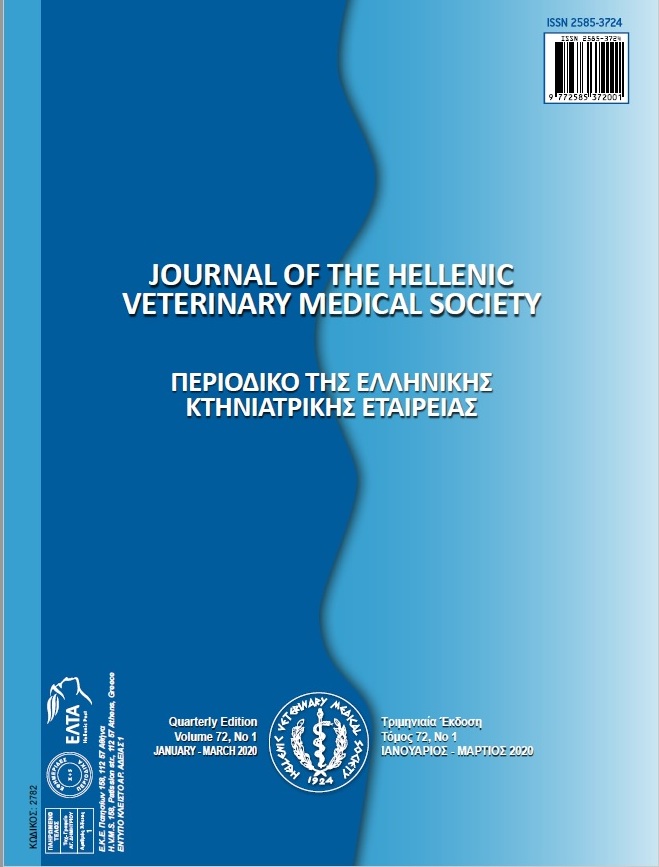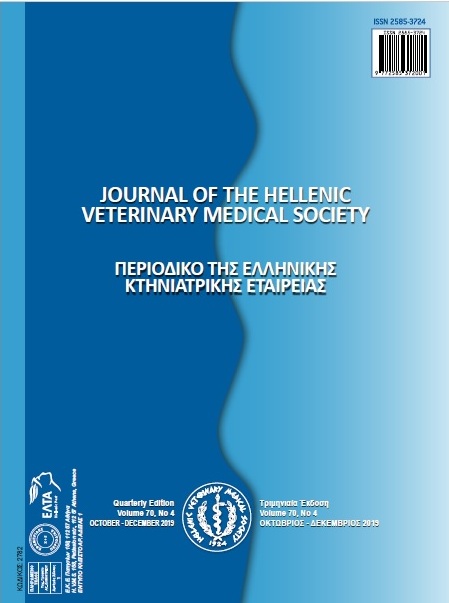Hereditary myelopathies in dogs

Abstract
The purpose of the current review is to summarize data regarding hereditary myelopathies in dogs. Canine degenerative myelopathy (DM) is a progressive disease prevalent in senior (≥8 years old), large breed-dogs, predominating in German shepherd dog. Neurolocalization indicates a thoracolumbar, upper motor neuron, lesion; it can progress to the thoracic limbs and later to lower motor neurons of all limbs resembling human amyotrophic lateral sclerosis (ALS). Tentative diagnosis is based on ruling out other progressive myelopathies. Clinical similarities between ALS and DM made superoxide dismutase 1 gene (SOD1) a viable candidate gene as an etiopathogenic factor. Α E40K missense mutation of the SOD1 has been linked to DM. A genetic test for DM exists, which will aid breeding programs to eliminate the disease. Exercise and physiotherapy are important to slow the progression of DM. Long-term prognosis is poor as dogs become non-ambulatory within 4-6 months from the time of diagnosis. Dystrophic myelopathies include Afgan hound myelopathy/hereditary necrotizing myelopathy in Kooikerhondje dogs, leukoencephalomyelopathy and neuroaxonal dystrophy in Rottweilers and spongiform leukoencephalomyelopathy. A similar myelopathy is Jack Russell and Fox terrier hereditary ataxia. Their etiology is suspected to be hereditary and they appear at a young age. They are diagnosed solely postmortem with histopathological examination. There is no etiologic treatment and the prognosis is poor except for Rottweiler neuroaxonal dystrophy and Jack Russel ataxia due to the extremely slow progression of symptoms. Syringomyelia is characterized by the formation of fluid filled cavities within the spinal cord and outside the central canal that may communicate with the central canal and it is caused mainly due to Chari-like malformation (CLM). The most important clinical sign is neuropathic pain and is localized in the cervical region of the spinal cord. Progression of the disease varies, there are severe disabilities due to pain or it can be an incidental finding. CT and MRI are the preferable ways to detect the lesions. For CLM, therapy includes surgical and medical management. Drugs can be divided into analgesics (non-steroidal anti-inflammatory, gabapentin, pregabalin, tramadol), drugs reducing cerebrospinal fluid (CSF) production (omeprazole, acetazolamide, furosemide) and corticosteroids. Medical therapy diminishes the severity of clinical signs but never succeeds full resolution.
Article Details
- How to Cite
-
Baka, R., & POLIZOPOULOU, Z. (2021). Hereditary myelopathies in dogs. Journal of the Hellenic Veterinary Medical Society, 72(1), 2583–2594. https://doi.org/10.12681/jhvms.26740
- Issue
- Vol. 72 No. 1 (2021)
- Section
- Review Articles

This work is licensed under a Creative Commons Attribution-NonCommercial 4.0 International License.
Authors who publish with this journal agree to the following terms:
· Authors retain copyright and grant the journal right of first publication with the work simultaneously licensed under a Creative Commons Attribution Non-Commercial License that allows others to share the work with an acknowledgement of the work's authorship and initial publication in this journal.
· Authors are able to enter into separate, additional contractual arrangements for the non-exclusive distribution of the journal's published version of the work (e.g. post it to an institutional repository or publish it in a book), with an acknowledgement of its initial publication in this journal.
· Authors are permitted and encouraged to post their work online (preferably in institutional repositories or on their website) prior to and during the submission process, as it can lead to productive exchanges, as well as earlier and greater citation of published work.





